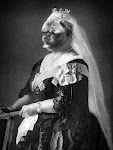As the evenings cool and the leaves turn, the dearth of culture begins to subside and the patrons trek back downtown. Thus this weekend marked the beginning of the 29th season of the Kansas City Symphony. Michael Stern, Music Director was on the podium leading a strong program of popular and colorful works and a Kansas City premiere.
The program opened with the aforementioned local premiere of a KCS co-commissioned piece "Starburst" by Jonathan Leshnoff. Leshnoff has won considerable critical acclaim and recognition for his recent Symphony (performed by the KCS a couple of seasons ago) and a recording of his Violin Concerto. Stern has formed a successful collaborative venture with Leshnoff, and recently recorded the Symphony with the IRIS Orchestra.
While I enjoyed the Symphony and was impressed by the Violin Concerto, "Starburst", at 7 minutes or so, is a work of lesser stature and impact. That is not to say it is great fun; the simple, repetitive motives and rapid, colorful development of them are easy on the ear and likely a challenge to play. "Starburst" may find a home as an opening work for orchestras with adventurous natures.
We have heard the Sibelius Violin Concerto three times now in the last 6 seasons with the performances getting better each time. The Barnabas Keleman/Stern in 2007 and Karen Gomyo/Andrew Grams last season each had their issues with Gomyo's the better of the two. But for now, I can not imagine another soloist that can top Hilary Hahn in this work, especially after her acclaimed recording with Salonen/Swedish Radio on DG.
Hahn simply owned this most strange, hardly "showy", but fabulous concerto from first note to last. The opening was misty and tentative, the solo violin entering shyly, slowly building in intensity and emotion. Hahn's tone was creamy but clear, projecting with clarity (mostly) through Sibelius' often thick scoring. Neither Hahn's shimmering virtuosity nor Stern's powerful orchestra got in the way of the brooding, almost desolate musical landscape.
The lovely Adagio was suitably romantic but never overblown, with enough subtle drama and tension to keep the movement flowing.
Keeping the intensity flowing, the energetic last movement came not as a jarring surprise as it does in some performances, but as an inevitable release of energy from the tension of the other two movement. Hahn brisked over the rapid passages that tie lesser artist's fingers into knots. My favorite little spot, the odd passage of dare I say gypsy-like harmonics from the solo, came of well, not buried in the orchestral fabric.
Stern and the orchestra stayed in the background when needed, (their barely perceptible "vamp" at the beginning of the finale was perfect, more a texture than sound) and yet blazed with Sibelian glory when needed (the first movement outburst at the end of the exposition is a prime example). The audience and I showed our enthusiastic appreciation for an incredible performance from an artist at the peak of her powers.
For the last half of the concert, Stern and the orchestra turned to two colorful dance inspired classics, Ravel's Valses nobles et sentimentales and the Suite from Stravinsky's Firebird.
Ravel may have wanted to write a "chain of of waltzes in the style of Schubert" but he succeeded in making them unmistakably French. Stern and Co were perfectly elegant and sophisticated in these charming dances, drawing them out of the gloomy mist of the opening (brilliantly hushed in this performance) into the light of a Parisian salon.
The 1919 Suite from the Firebird brought the concert to a colorful close. The Introduction and Dance of the Firebird and the Round Dances of the Princesses were suitably exotic and laced with excellent solo work from the winds. The Infernal Dance of Kashchei burst force with shattering power, awakening all who might have been lulled into the dreamy world of the opening sections. Stern and the orchestra gave their all as they moved through the sweet Berceuse and on to the grandly celebratory finale.
The orchestra was sounding quite good technically (it did as well in the productions of Carmen the week before) despite some new players and the still unsettled question of a new Concertmaster. The last season in the venerable Lyric Theatre off to a fine start.




